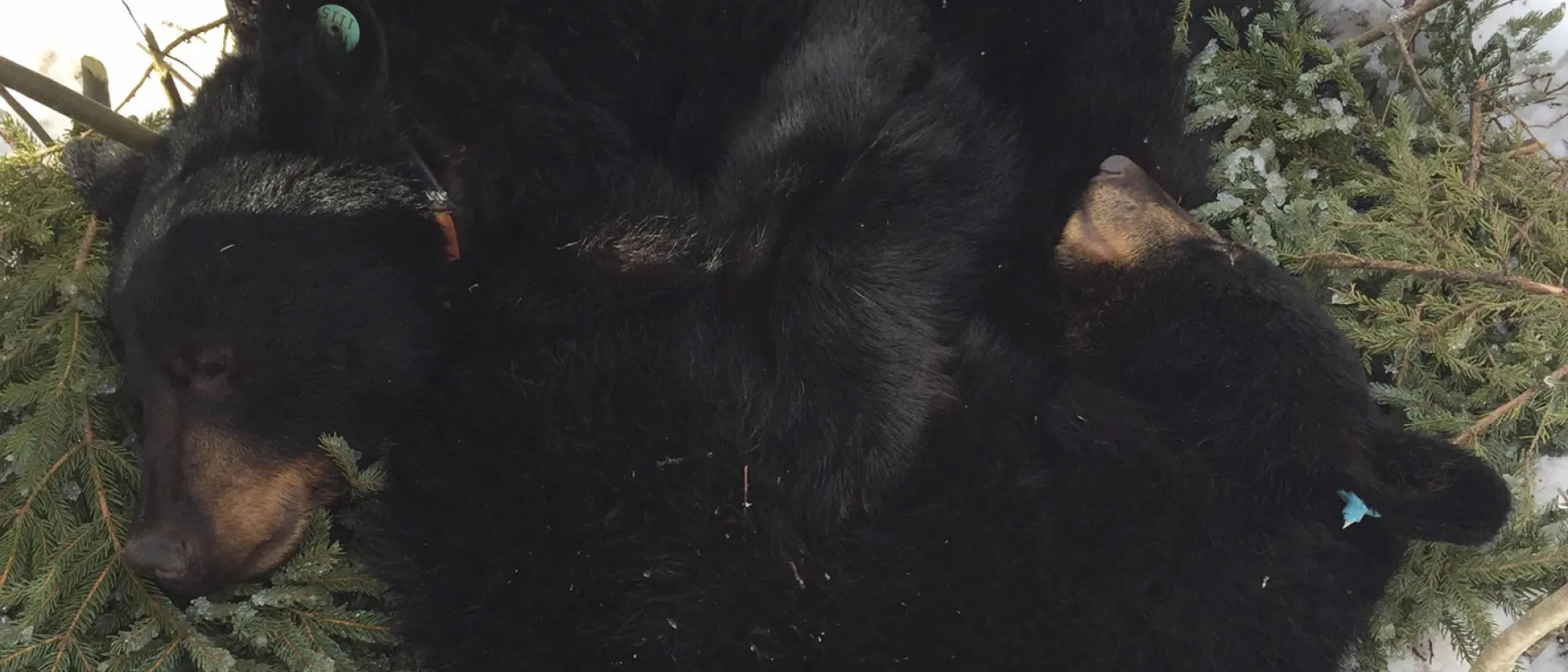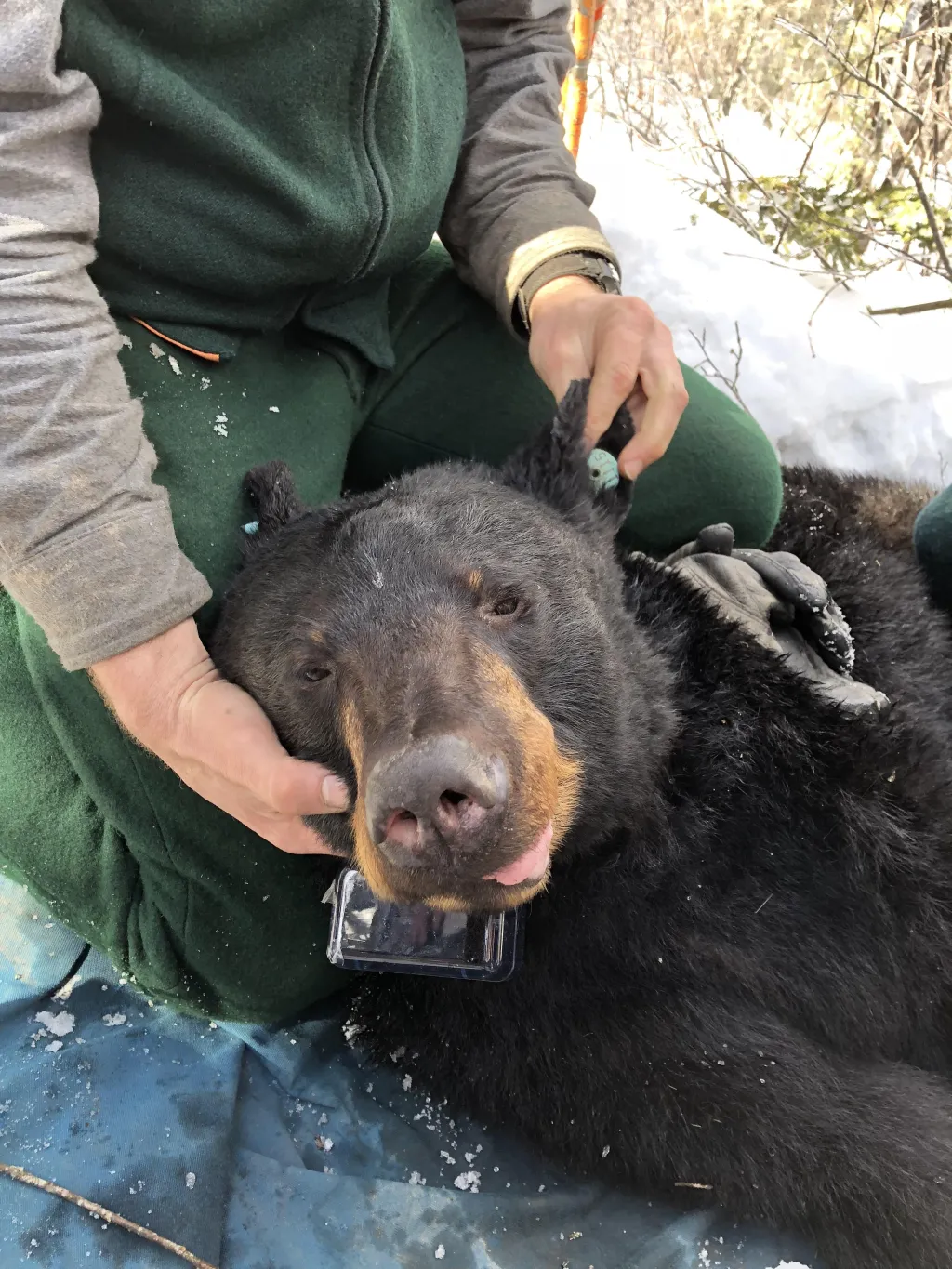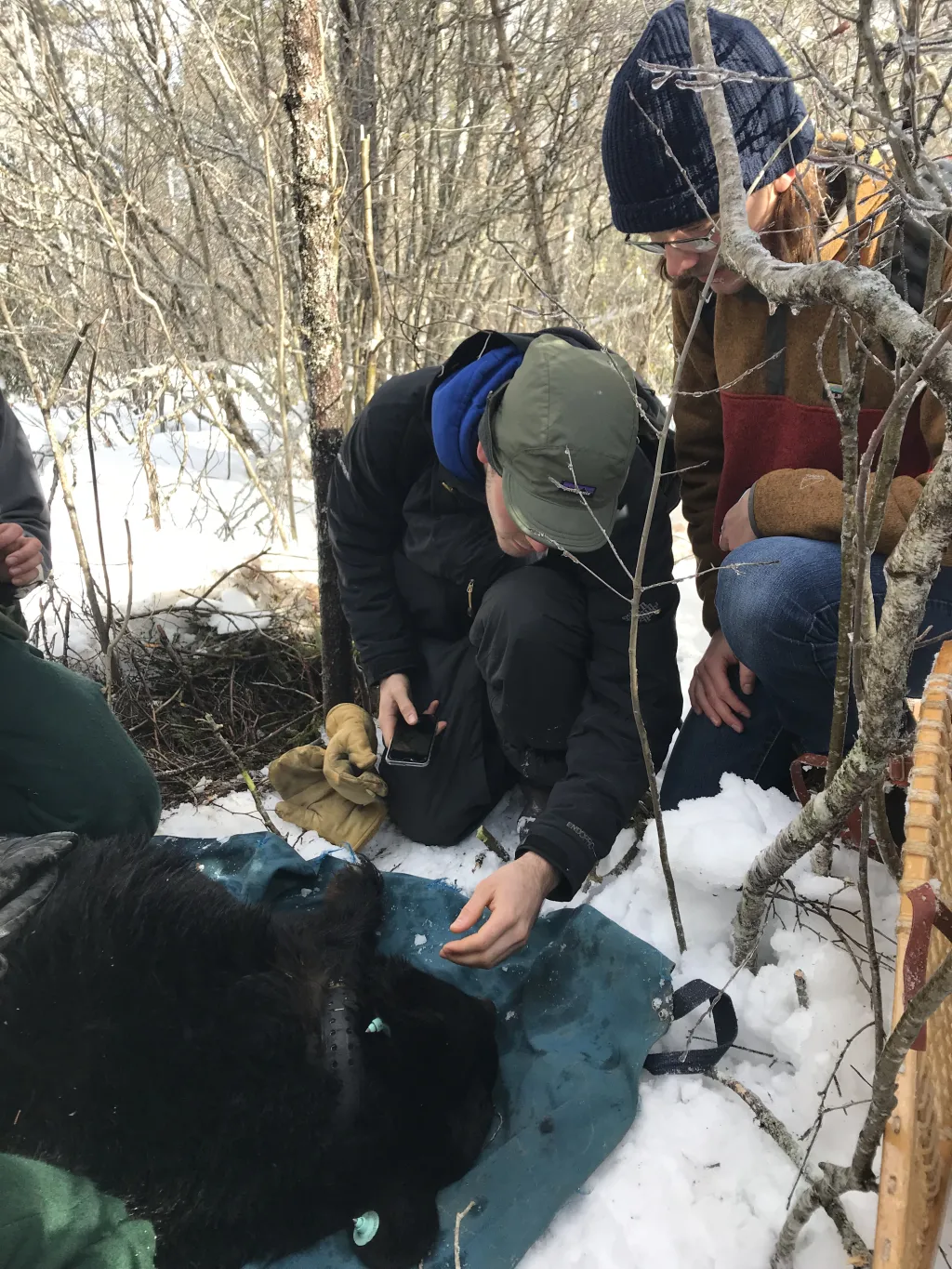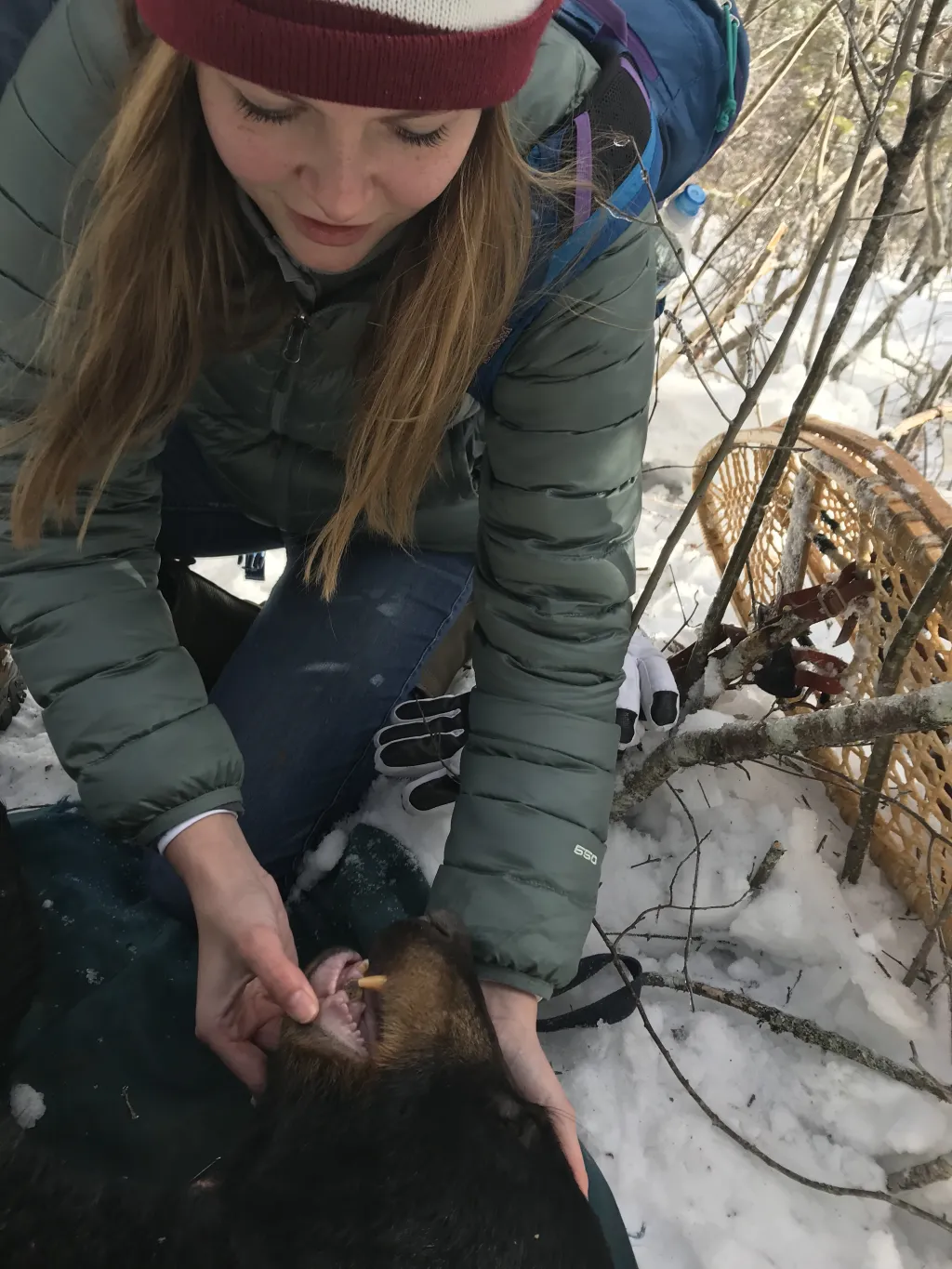UNE undergrads examine hibernating black bears with environmental studies professor Noah Perlut

It’s that time of year in Maine when we all start to congratulate ourselves for making it through another winter. Windbreakers replace our heavy winter parkas on our coat racks, and our boots get to see the back of our closets once more. As modern day Mainers, most of us are well-equipped with gear to survive the cold and snowy months. But the animals in our region, who don’t have L.L. Bean credit cards, have developed other ways to deal with the hardships of the season.
How animals survive the winter is one of the many topics included in Associate Professor Noah Perlut’s Terrestrial Wildlife course. “It’s a broad survey of everything from how and why animals hibernate to the effects of wind turbines on birds and bats,” he says of the class. No matter which terrestrial wildlife issue he is teaching about, though, Perlut ensures that the course features an intense field component. Every week, he takes his students outdoors for real-life experiences with wildlife that you just can’t get from a textbook, he says. And none of the class’s excursions has been quite as hands-on and up close as a trip they took in January to a bear den.
After departing campus at 5 a.m., the group drove to Bangor to meet up with Randy Cross, the lead bear biologist for the Maine Department of Inland Fisheries and Wildlife, and his seasonal crew who work with him at three study sites in the state to gather data about the black bear population (Maine’s only bear species). Cross and company put radio collars on female bears, which allow them to monitor cub production, cub survival and maternal health.
After joining up with the biologists, members of Perlut’s class drove north for about another hour and then, through a combination of snowmobiling and snowshoeing, ventured out to an expanse of industrial forest land.
Cross led the group to a bear den, where a mother black bear and her year-old cub were hibernating. Perlut explains that, contrary to what a lot of people think, hibernating bears are not sleeping. “Hibernating bears are awake and aware,” he clarifies. “They are just in a very low metabolic state with a heartbeat of about eight beats per minute.” The cub was so aware, in fact, that upon seeing the human visitors, he began to run away. The crew of biologists caught the cub, however, and tranquilized both him and the mother.
With the bears safely sedated, Perlut and his students approached the animals more closely. Student Amber Jenkins (Animal Behavior, ’19) recalls that moment: “I remember coming around the corner and looking into the mother bear’s eyes, and I felt my heart stop. Every hair on my body stood up because every instinct told me I should not be near this powerful creature,” she says.
But get near them the students did – very near. In the experience of a lifetime, they examined the animals in a way that none of them ever imagined. “It’s all hands-on,” Perlut explains. “You’re touching the bears; you’re smelling the den. It’s an opportunity to really look at these bears up close and see their physical characteristics.” One of the highlights for Perlut was the opportunity to touch the bear’s fur. “To be able to look at the actual length of the bear fur is incredible,” he exclaims. “Their fur is six inches long – longer than my hand. To feel the depth of it… you had to dig and dig to find any skin on the bear.”
“We had our hands in their mouths and all over their paws,” he continues. It was amazing to feel their paws and see how they move, to feel the muscles of their legs, to smell the bears, to look at their reproductive parts, to see the wear on their teeth, to experience what a bear tongue feels like and to see the length of it.”
Environmental Science major Flynn Willsea ’19 agrees that the experience was mind blowing. “I was in awe during this time because I had never thought I would ever be that close to a living bear and be able to look into its mouth, at its paws, and be able to pet it,” he says.
Interestingly, the mother-cub pair was denning in a nest of spruce bows. According to Perlut, it is more common for black bears to hibernate in interior dens, formed from things such as old tree stumps or rock crevices. The biologists pointed out that this was not the first den occupied by the bear duo this season; an abandoned nest lay not far from the one in which the bears were found. The first nest, likely, became wet or flooded, causing the bears to rouse from hibernation to prepare a different spot.
Perlut says that in addition to seeing, smelling and touching the bears, having the opportunity to do so in the bears’ own environment was a great learning opportunity. “It blew me away. It was so incredible to be able to do this. The amount that we learned about dens in just that one tiny period of time was astonishing,” he remarks. And for the students, he believes, this hands-on lesson on bears and hibernation was far more effective than any lesson he could prepare for the classroom. “You understand it so differently from when you read about it in journal articles or papers or hear me talk about it. To go in there and actually see it and talk to these guys who are going into 100 dens every winter… it’s eye opening for the students to learn directly from experts about the different features of denning and the habitats that the bears select.”
Perlut, who makes it a point to bring outside speakers into his classes, also recognizes the benefit in introducing his students to professionals working in the field. “They get to see what it’s like to have a career in these fields, and that’s an important component of what they learn too,” he shares. Jenkins affirms the value of interaction with the experts. “The entire time the bear crew was with us, everyone was asking questions, and they were so helpful and kind. They really ignited a passion in us,” she says.
As for mom and baby, they are up and about by now and have returned to life as usual. The cub will stay with the mother through the summer until she breeds again in the fall.
For Perlut, Willsea and Jenkins, the trip made a lasting impression. Perlut expresses that in his 12 years of primary school, 11 years of university study, and 11 years of teaching at universities, it was, “unquestionably, the most memorable educational experience” he has ever had. Says Willsea: “It is something that I will remember for the rest of my life.” And Jenkins swears that she “will never forget the bears.”
Fortunately for them, and the other members of the class, Bean boots don’t come in bear sizes.
To learn more about the College of Arts and Sciences, visit www.une.edu/cas
To apply, visit www.une.edu/admissions


